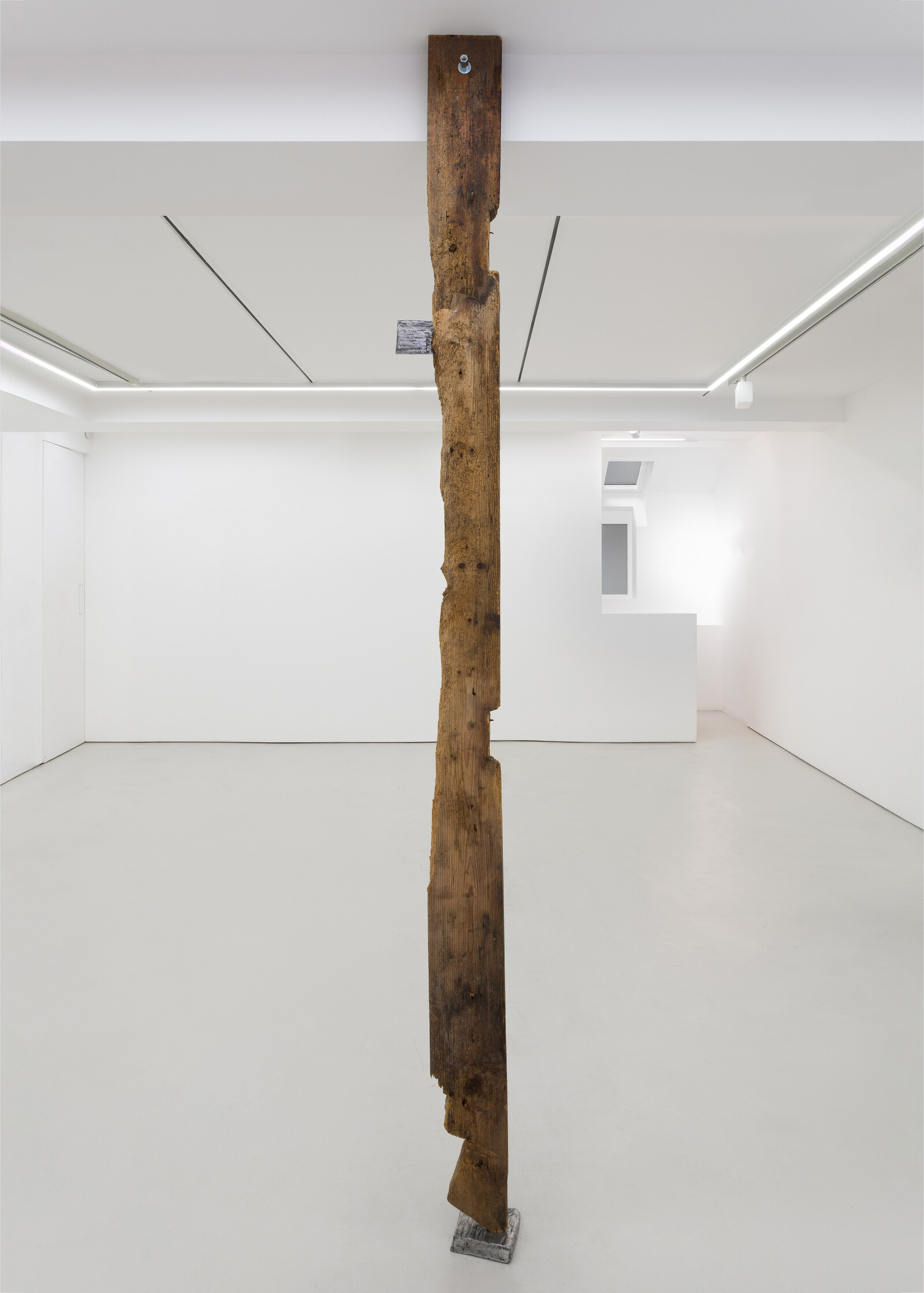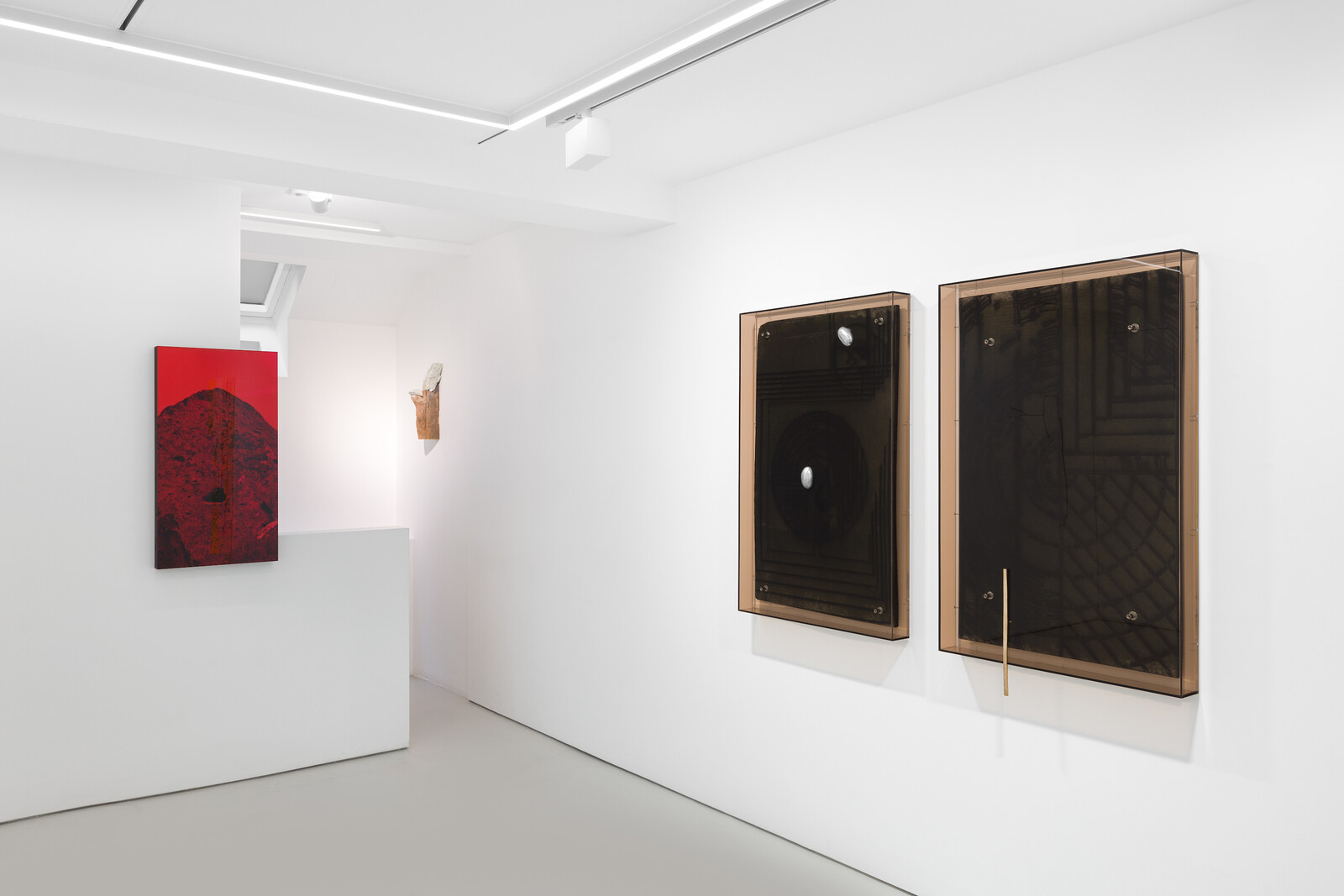In 2021, Saskia Noor van Imhoff purchased a dairy farm amid the polder landscapes of Friesland in the Netherlands. The farm had been active for some four hundred years, but derelict for the past fifteen. van Imhoff approaches the site as a research project, entitled Rest, with the implication that the land, exhausted after centuries of extractive management, now finally has the chance to recover. With the land recuperating, the artist set to work: reactivating the farm not only as a site of agricultural production (prioritizing a certain conception of environmental responsibility over a profit motive) but also as a place for workshops, symposia, and other interdisciplinary activity. Meanwhile, van Imhoff has also reoriented her practice in response to the land, its historic uses and possible futures.
“Mineral Lick” is the first UK solo show for van Imhoff, whose previous work has focused on hierarchies of value within collecting institutions such as museums and archives. Here, she foregrounds unexpected material combinations underpinned by a fascination with grafting, hybridity, and the recontextualizing of materials. GRIMM’s street-level windows have been washed with white shading paint and the interior glows with pink-red light—both echoes of the forced growing conditions of commercial greenhouse production. The exhibition includes photography, sculpture, and architectural installation, all works dating from 2024. Chunky hexagonal metal rivets are prominent throughout.
In contrast to the flat vistas of Friesland, the exhibition is marked by a striking verticality. I’m reminded of Rosalind Krauss’s description of the vertical as “the axis of beauty” as opposed to the “base materialism” of the horizontal.1 Rubber mats, once on the ground under the hooves of dairy cattle and now wall-mounted in the gallery, have been laser-etched with geometric patterns based on abstracted tree rings or maps of the farm (Landscape Garden and Wan). Several of these are etched with multiple parallel lines as if corrugated, like the metal roofs of farm buildings or an aerial view of ploughed fields. Reaching from floor to ceiling is Heritage (Wood), a column formed from two old timber beams riddled with woodworm holes. Completing the work are two aluminum casts of wooden wedges pushed between the two beams and between the beams and the gallery floor. From the (rural) farm to the (urban) gallery, van Imhoff translates agricultural materials into considered elegance. In so doing, she takes the bodge job, the temporary solution, and suspends it in time.
This interest in preservation also informs Fourth Nature (2024). Plexiglass has long featured in van Imhoff’s work due to its use by museums for protection and display. Here, dried-out roots from a dead tree on the farm are exhibited inside plexiglass containers colored a warm yellow, as if held in amber. Like Untitled, an aluminum cast of discarded packaging lying in a corner of the gallery, Fourth Nature is a reminder that objects survive as much by chance as by care. On the outside of the plexiglass is more white shading paint, into which the artist has scratched depictions of various weeds and grasses. Across the gallery, the artist has used the same technique on Grids, Nettles and Thistles (Nitrogen Traces), which celebrates the plant species now rebalancing the nitrogen-saturated soil of the dairy farm.
“Working landscapes create their own aesthetics,” wrote Ken Worpole in New English Landscapes (2013). Worpole argues that farms have very different priorities to other sites of entanglement between human and nonhuman, such as gardens or nature reserves, and that we ought to respond with sensitivity to these differences. van Imhoff is not the only artist operating on a working farm. In Barbados, Annalee Davis explores legacies of enslavement on a former sugarcane plantation; in County Carlow, Ireland, Katie Watchorn abstracts agricultural architecture to emphasize violence and sterility; and the Dutch pavilion at this year’s Venice Biennale is showing Cercle d’Art des Travailleurs de Plantation Congolaise, a collective working to turn a plantation in Lusanga back into sacred forest. Whether digging into the past or planting for the future, these artists approach farming not only as a subject to research or depict but as a living practice of production.
The exhibition’s titular work, Ten Days (Mineral Lick), consists of four small objects made from salt and shaped by the licking of goats at a nearby farm. Both bodily (the pieces resemble spinal vertebrae) and geological (the slow eroding of form), Ten Days (Mineral Lick) is a subtle reminder of the systemic cruelties of industrial farming. The work does not embody the explicit radicalism of Lin May Saeed’s animal liberation sculpture or the affective power of Annalee Davis’s expressive reclamations of plantation ledgers. Nor does it necessarily claim to. To critique the systems by which value is generated is surely always political, and while the 2024 election highlighted the extreme right-wing politics of many Dutch farmers, van Imhoff’s approach, by contrast, is calm and precise. This is a sophisticated engagement with the aesthetics of agriculture.
See Rosalind Krauss, Cindy Sherman, 1975-1993 (New York: Rizzoli, 1993).





